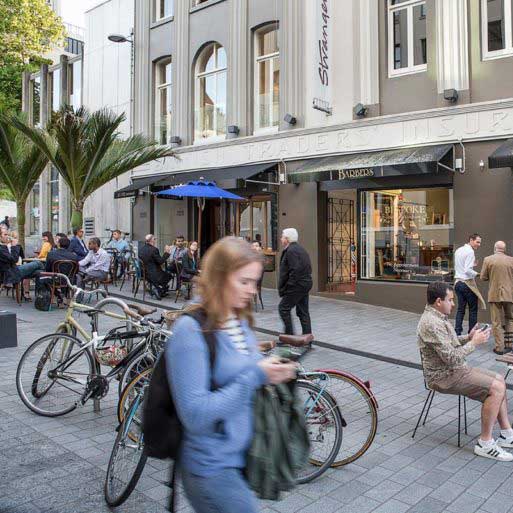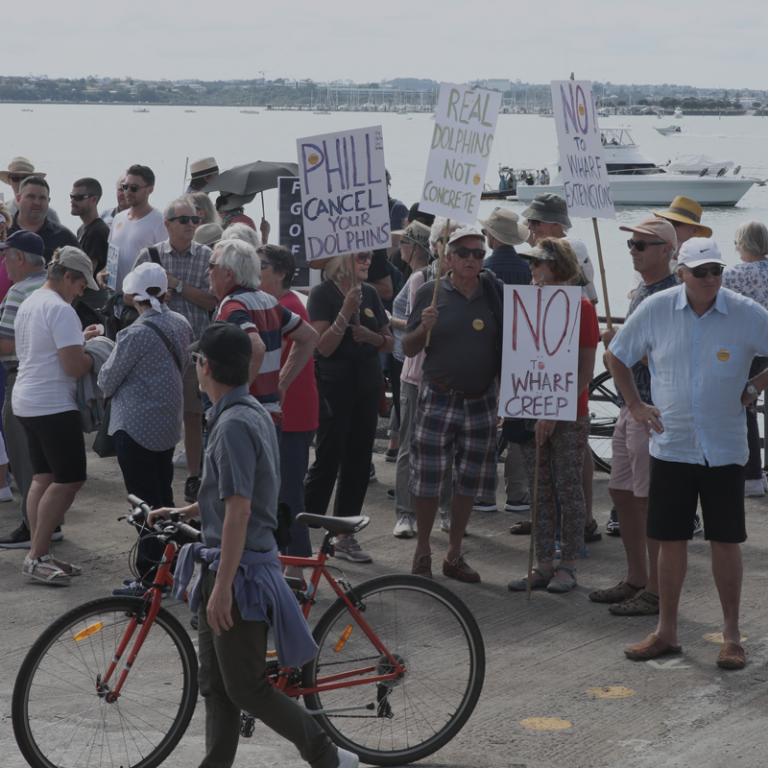Past Campaigns


2018- 20
No Dolphins, Queen’s Wharf
- Objections to a proposed 90 m extension to Queens Wharf for mooring structures
During Environment Court mediation, we were joined by the Cruise Industry and Ngāti Whatua Ōrakei representatives. The Urban Auckland Chair met with the Mayor and managed to arrange a deferral of proceedings and the Mayor’s backing of a Council-led initiative to bring all parties around the table to canvas options available. These three meetings between parties and the Ports of Auckland representatives were most useful in discussing the long-term use of Bledisloe Wharf as a large cruise ship facility. Queens Wharf could continue as a berth for the smaller 260 m long ships.
In December 2019, the Resource Consents for the Dolphins were withdrawn by Eke Panuku.
We continue to call for the continued development of Queens Wharf as Auckland’s premier waterfront space – ‘the People’s park’- the gateway to the harbour for the people of Auckland.
In our campaign we were joined by:
Stop Stealing Our Harbour, NZ Historic Places Trust, Civic Trust, Auckland Architectural Association, City Centre Residents Group, Parnell Residents Group, Devonport Heritage.
Our Legal Campaign was joined, as 2274 parties, by;
Cruise Lines Association, NZ Cruise Association, ISS-McKay Ltd Shipping, Ngāto Whatua Ōrakei Whai Maia, Parnell Community, , Devonport Heritage, Regional Tourism NZ, Tourism Industry Aotearoa, RNZ Yacht Squadron, Ponsonby Cruising Club, Westhaven Marinas Users Association.
This campaign cost UA over $80,000 in legal fees to fight poor processes at Auckland Council.
2017- 18
America’s Cup 2020 Bases, Wynyard Quarter
- Objections to a proposed 220 metre long wharf extension off Halsey Street,
- Lobbying for the long-term legacy of the America’s Cup for Auckland was the removal of the tanks from Wynyard Wharf.
Auckland Council through its agency, Eke Panuku Developments, was proposing a 220 metre long extension to Halsey Street wharf, 75 metres out into the harbour to house 8 America’s Cup Syndicate bases, plus provide berthage for superyachts.
- The proposed wharf extension and associated 15 m high sheds, would block the views of the harbour from the Viaduct Basin.
- The long term legacy of the America’s Cup 2020 should be the removal of the storage tanks from Wynyard Wharf to allow for the yachting bases to fit in with the longer term plans for Wynyard Point.
We argued that the proposal was unnecessary, expensive and shortsighted, and would remove a sizeable tract of the Waitemata Harbour from public use. The Cruise industry agreed with us, saying that they wanted a ‘quality’-driven waterfront experience for tourists and Aucklanders alike.
We made submissions to the Auckland Council Development Committee of alternative scenarios.
We produced drawings and made models of alternatives which we presented to the Minister of the Environment and America’s Cup, the Right Honourable David Parker, showing the effects of the proposals. We argued that the proposal would bring heavy traffic and service vehicles right at the heart of the Wynyard Quarter Pedestrian spine. This was inappropriate urban design and went against the Precinct’s own urban design Master Plan.
The Minister of the Environment then made two important moves. He secured the removal of the tanks, something Eke Panuku had been arguing couldn’t be done. He also told Eke Panuku that the cost of using the Waitemata could not be valued as zero on the Cost Benefit Analysis, recognising the importance of environmental and cultural factors.
The end result was that the tanks were removed to allow the syndicates bases to be established and a smaller scale wharf extension was added to Halsey Wharf to make a base for the Challengers.
In December 2019, the Resource Consents for the Dolphins were withdrawn by Eke Panuku.
We continue to call for the continued development of Queens Wharf as Auckland’s premier waterfront space – ‘the People’s park’- the gateway to the harbour for the people of Auckland.
In our campaign we were joined by:
Stop Stealing Our Harbour, NZ Historic Places Trust, Civic Trust, Auckland Architectural Association, City Centre Residents Group, Parnell Residents Group, Devonport Heritage.
Our Legal Campaign was joined, as 2274 parties, by;
Cruise Lines Association, NZ Cruise Association, ISS-McKay Ltd Shipping, Ngāto Whatua Ōrakei Whai Maia, Parnell Community, , Devonport Heritage, Regional Tourism NZ, Tourism Industry Aotearoa, RNZ Yacht Squadron, Ponsonby Cruising Club, Westhaven Marinas Users Association.
This campaign cost UA over $80,000 in legal fees to fight poor processes at Auckland Council.
Our concentrated lobbying work paid off, and we hope it continues with the America’s Cup base space being left in perpetuity for events.
We conducted this campaign with Stop Stealing Our Harbour and were joined by Viaduct Harbour Holdings Ltd, in meetings with the Mayor. The support of the new Minister of the Environment was crucial.
2017
Rymans Healthcare Village, Ngataringa Bay
2017
QE Square and Commercial Bay
2015-16
Ports Future Study
The High Court Victory meant that Mayor Len Brown agreed that Auckland Council would conduct this ground-breaking study. Urban Auckland helped draft up the conditions of the study – that it be representative of stakeholders from around the table – PoAL, shipping, business, employers and manufacturers, economists, mana whenua, environmental groups, community groups and urban design community (Urban Auckland). Sixteen people formed the Consensus Working Group, under the facilitator appointed by Auckland Council. Ernst Young (now EY) was engaged to do the study on the implications and issues relating to the port and report back to the CWG.
The Ports Future Study http://www.portfuturestudy.co.nz/ was the outcome of that.
It was acknowledged that in time, 25- 30 years was settled on, the Port would have to shift as its capacity and supporting infrastructure would be no longer able to cope. It was also acknowledged that, as Auckland’s central city population grew, PoAL’s social licence to occupy its current position could also expire. A number of ‘triggers’ for that were identified. It was recommended that the Government implement an Upper North Island Supply Chain or future freight task Study and that future location/s for a port be established before options were restricted.
Stop Stealing Our Harbour was formed and became an active supporter of the issue, engaging public media and organising protests.
2014-15
Ports of Auckland extensions to Bledisloe Wharf
Just before Christmas, December 2014, Ports of Auckland applied for two 98 m long wharf extensions, one each side of Bledisloe Wharf, citing that ships were getting longer. Wharfs were an allowed activity under planning rules but the implied longer term goal was to fill in between the wharves, effectively reclaiming more of the harbour by 100 metres.
We organised a series of public protests, under the banner “Stop Stealing Our Harbour”. A separate organisation grew out of that to take over the public campaign while Urban Auckland went on to concentrate on the legal case being mounted for the High Court. The case was built around the challenge that the two applications had been looked at separately and effects were deemed less than minor when it was clear in PoAL plans that the cumulative long-term effect of the two wharfs was definitely less than minor. The Judge ruled in our favour.
Many, many Aucklanders who came out to protest in their boats, on the wharfs and on the streets.
After nearly a century of being denied access to our city waterfront, Aucklanders were getting frustrated with PoAL’s high-handed attitude. They were starting to appreciate just what a taonga their harbour, the Waitemata, is and that parking cars and containers on land beside it was no longer acceptable.
This campaign cost $250,000 in legal fees to fight for our waterfront. We were awarded costs, and many people, including our lawyers ….. donated time and money, but it also took an enormous amount of our time.